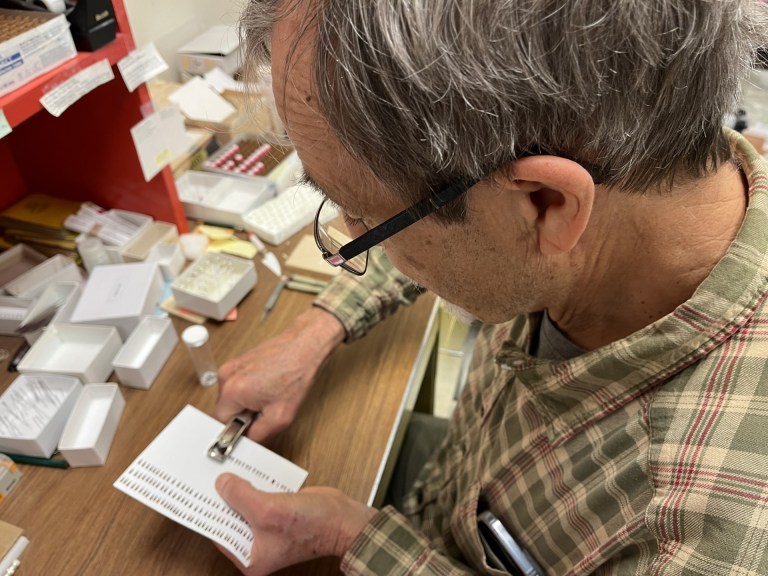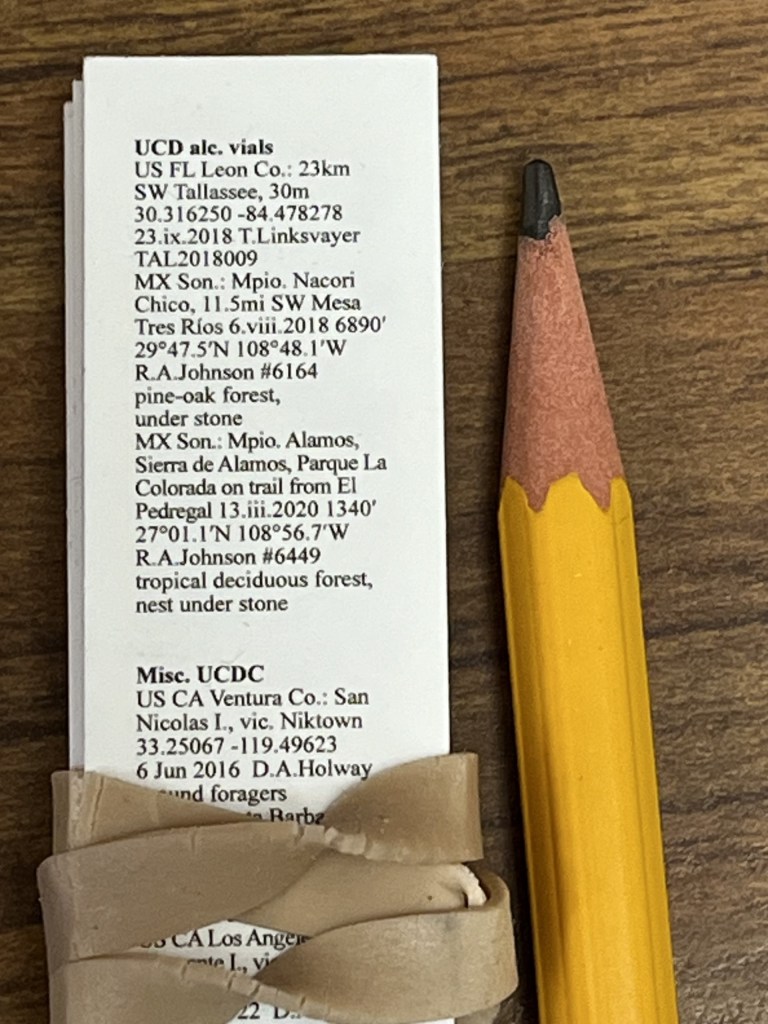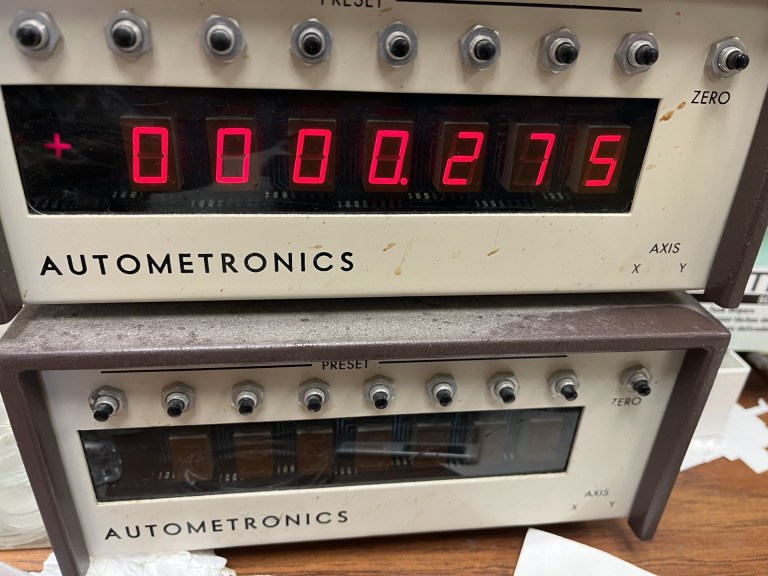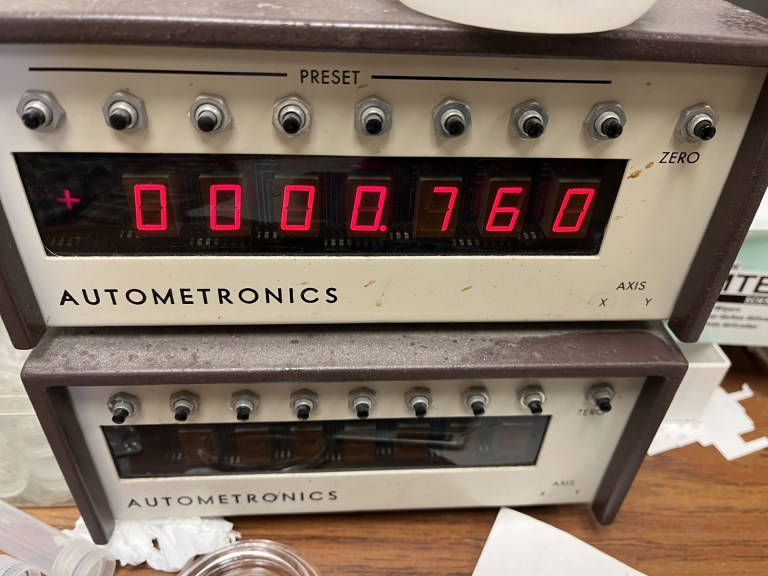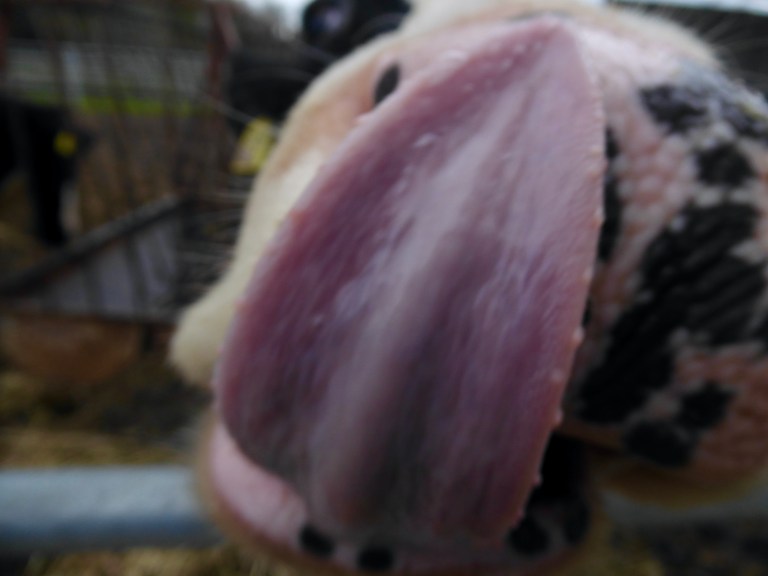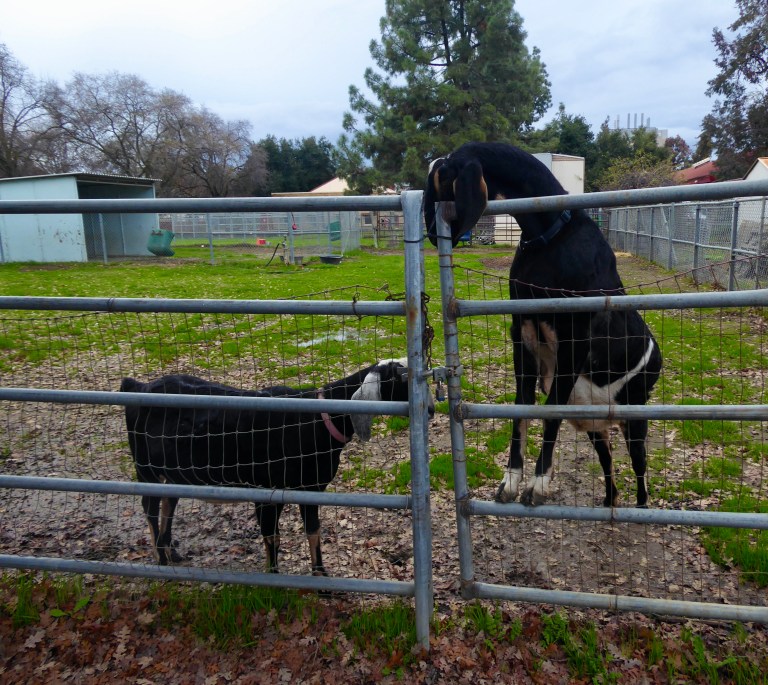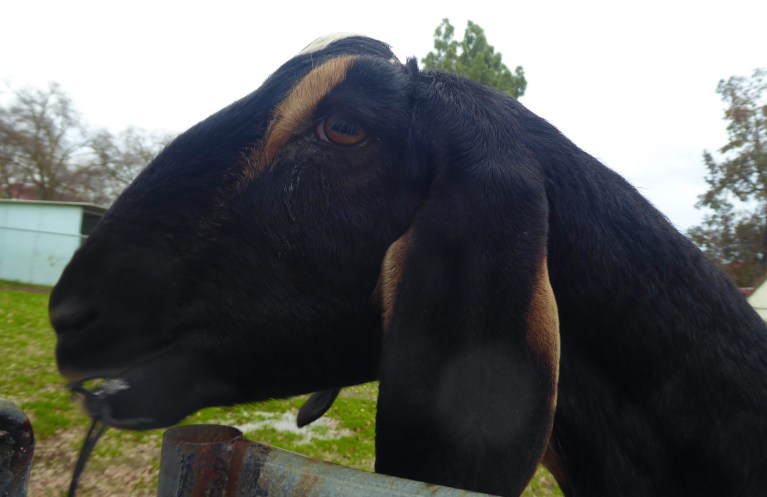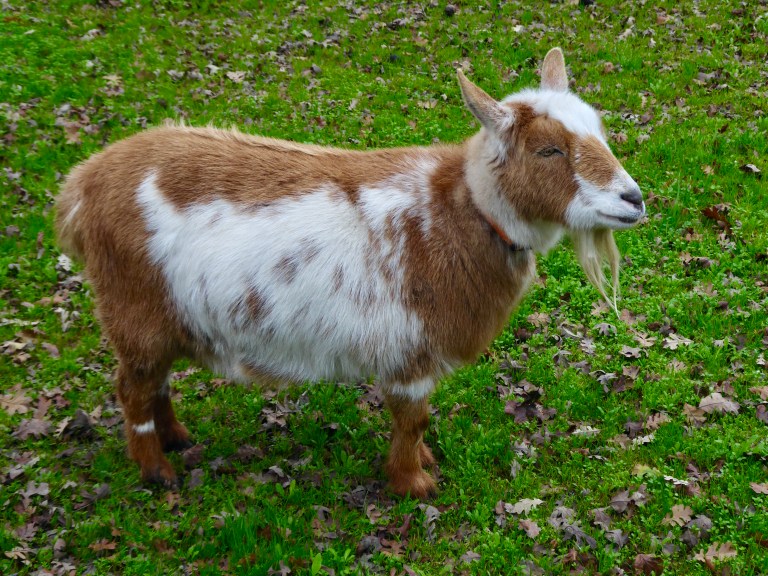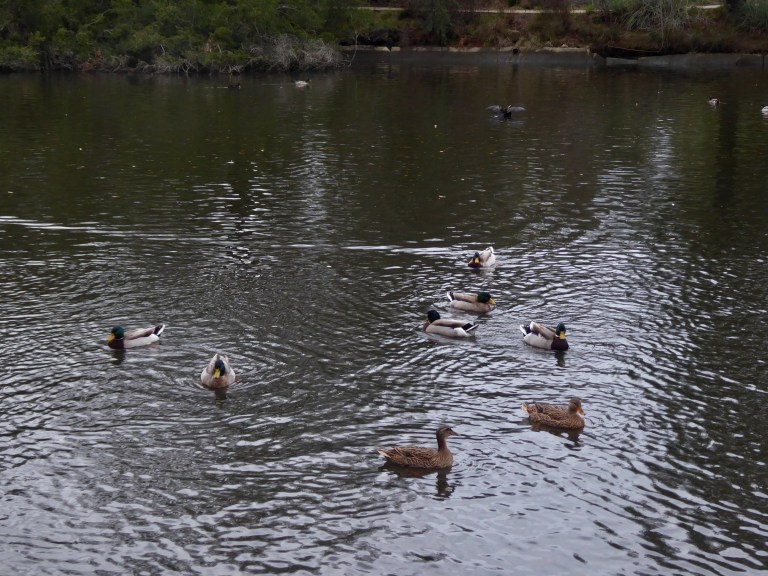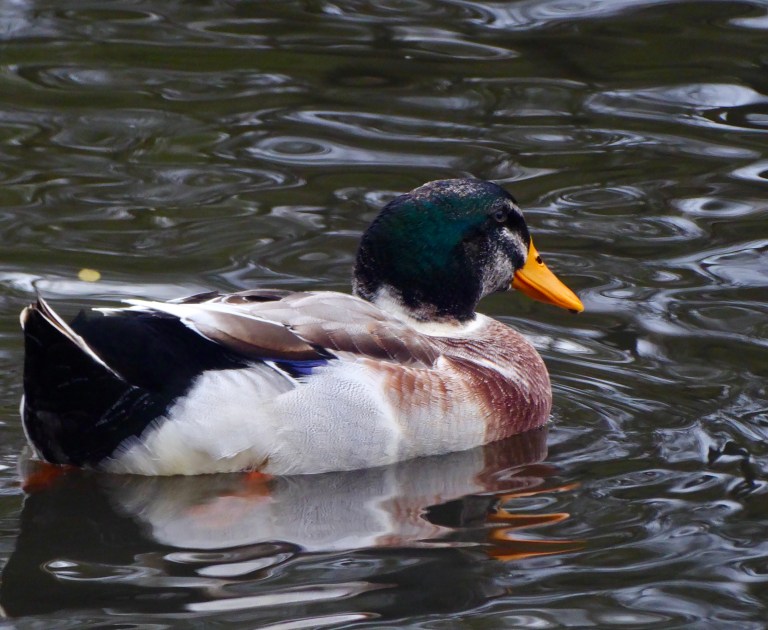There’s more DNA-dissing is going on, this time in a piece in Aeon arguing that it is bad for society and for biology to think of the cell as an assembly line of molecules controlled by a “boss” in the nucleus. The cell, after all, is more socialistic!
Author Charudatta Navare, whose short bio is given below after his name, advances his thesis that the cell is NOT an entity “controlled” from the top down by the capitalistic nucleus, as if the cell were a “factory” with its sweating workers—the contents of the cell—lashed by the whip of the nuclear DNA. To Navare, that’s simply an invidious capitalistic/patriarchal/classist metaphor. Instead, the “workers”, including everything in the cytoplasm like the ribosomes, mitochondria, vacuoles, vesicles, endoplasmic reticulum, and ribosomes, are independent entities with their own heredity, all cooperating in a genial manner to make the cell function smoothly. As Navare asserts, “the nucleus is only a tiny subset of the hereditary material.” The cell, it seems, is more like a collective farm than a car factory.
The message, which Navare repeats at length, is THE CELL IS NOT A HIERARCHY. The motivation for the misguided view that the Big Boss Nucleus controls the workers is, consciously or not, to read into nature the hierarchy of modern patriarchal society. To Navare, the hierarchical view of the cell not only buttresses a maladaptively structured society, but, most of all damages biology by distorting our understanding.
Navare’s big mistake is this: the nucleus, which contains the genes, really is the boss. Even the mitochondria, which replicate themselves and contain their own genes, interact intimately with the nucleus to perform a number of functions. (The mitochondria, as you may know, are derived from original endosymbiotic bacteria that have, though evolution, been integrated into the cell as an essential organelle. Chloroplasts, essential for photosynthesis, have a similar origin and interact with the nuclear in the same way.) But both of these organelles can function only with the help of nuclear genes. And they’re the sole exception to the notion that prganismal DNA is the recipe for the cell and the organism.
The rest of the organelles in the cytoplasm, then, ultimately derive from genes, as does the spatial organization of the egg that helps set off development. This is not to say that random factors, like chemical concentration in different parts of the egg, can influence development, but at bottom, yes, everything in the cell save the mitochondria and chloroplasts ultimately come from the DNA in the nucleus. Without the Nuclear Boss, the workers lose their jobs and the factory goes kaput. Figuring out how this all evolved, of course, is a difficult issue. But evolve it did, via changes in the DNA.
Click below to read the article in Aeon:
Here’s the thesis (Navare’s words are indenteed):
In short, the textbooks paint a picture of a cellular ‘assembly line’ where genes issue instructions for the manufacture of proteins that do the work of the body from day to day. This textbook description of the cell matches, almost word for word, a social institution. The picture of the cytoplasm and its organelles performing the work of ‘manufacturing’, ‘packaging’ and ‘shipping’ molecules according to ‘instructions’ from the genes eerily evokes the social hierarchy of executives ordering the manual labour of toiling masses. The only problem is that the cell is not a ‘factory’. It does not have a ‘control centre’. As the feminist scholar Emily Martin observes, the assumption of centralised control distorts our understanding of the cell.
A wealth of research in biology suggests that ‘control’ and ‘information’ are not restricted at the ‘top’ bu
t present throughout the cell. The cellular organelles do not just form a linear ‘assembly line’ but interact with each other in complex ways. Nor is the cell obsessed with the economically significant work of ‘manufacturing’ that the metaphor of ‘factory’ would have us believe. Instead, much of the work that the cell does can be thought of as maintaining itself and taking ‘care’ of other cells.
Why, then, do the standard textbooks continue to portray the cell as a hierarchy? Why do they invoke a centralised authority to explain how each cell functions? And why is the imagery so industrially loaded?
It’s capitalism and the patriarchy, Jack! But in fact, the textbooks make DNA the boss because it is the boss. But wait, I’m getting ahead of myself:
All of this coded information in the cytoplasm leads us to ask: why do modern textbooks, which are supposed to present the standard, well-accepted knowledge of the day, continue to portray the cell as hierarchical in structure? Why do science journalists continue to refer to the codes and programs of genes in the nucleus when discussing how life develops and evolves?
I believe that the hold of the centralised view comes from how it resonates with the human social order. The nucleus providing instructions and the cytoplasm performing the labour of ‘nurturing’ sounds ‘natural’ and even ‘obvious’ in a patriarchal society. The central nucleus ordering its ‘underling’ cytoplasm to actually carry out tasks sounds obvious in a class-stratified society.
. . .The reason we find centralised functioning everywhere is not necessarily because it is everywhere. It just appears to be everywhere because of the lens through which we view the world. When scientific narratives, using all the authority of science, project the social hierarchy onto nature, they can reinforce the same hierarchy as ‘natural’. The centralised model from cells to animal social groups suggests that everything in nature is centralised, and that centralisation works. The ‘truth’ about nature is influenced by our values, and this ‘truth’ can then play a role in doubling down and reinforcing the same social values in the world.
. . . I believe that the hold of the centralised view comes from how it resonates with the human social order. The nucleus providing instructions and the cytoplasm performing the labour of ‘nurturing’ sounds ‘natural’ and even ‘obvious’ in a patriarchal society. The central nucleus ordering its ‘underling’ cytoplasm to actually carry out tasks sounds obvious in a class-stratified society.
And this metaphor, says Navare, damages our understanding of biology. I can’t think of how, since scientists have been beavering away at understanding the cell, and I haven’t sees them impeded by a bad metaphor. Perhaps they have, but I can’t think of one example. Navare keeps saying that the view is an impediment, but gives no examples of how. Here are more of his lucubrations:
How science conceptualises the cell also gives us insight into how we think of scientific objectivity. We often think that, when values interfere with science, the quest for truth and accuracy is put at risk. Scientists are supposed to leave their values and beliefs outside their labs. However, research in feminist science studies suggests otherwise. One does not necessarily need to be free of values to do good science, but denying their influence undermines the quality of scientific work. Instead of denial, reflecting on values and biases would help researchers steer clear of the pitfalls. Self-reflection can help scientists identify how their values are shaping their science, and think of better experimental designs that could ‘catch’ their assumptions before they compromise results.
. . .But the trouble with doubling down on this kind of metaphor as a stand-in for science is that assumptions about how a cell ought to function prevent us from understanding how the cell really functions. What is more, when science projects social hierarchies onto the cell, it also reinforces the notion that social hierarchies are ‘natural’.
In fact, Navare says that there are other metaphors that could serve equally well:
. . .Unfortunately, the centralised and hierarchical metaphor, so pervasive in textbooks, is often the only one for the internal workings of the cell.
One alternative metaphor for the cell nucleus, I tentatively suggest, could be a ‘collaborative notebook’. The cell keeps this notebook, and all the cell’s components use it to keep track of their activities and help maintain the cell. The cell ‘writes’ in the notebook, writes in the ‘margins’ and ‘refers’ to its own notes. Cellular organelles sense each other’s needs and take ‘care’ of each other. While the ‘factory’ metaphor attributes control and information to the nucleus, the ‘nucleus as a collaborative notebook’ shows agency on the part of the cell. While the factory metaphor makes the cell seem obsessed with ‘production’, alternative metaphors can highlight the mutual aid among the cellular components and the labour of maintaining the cell.
Try as I might, I fail to see how the Notebook Metaphor is more helpful than the “factory”metaphor, but of course it fits right into the Kropotkin-esque tendency to see mutual helpfulness (one could also see it reflectiong socialism). But truth be told, I’m not that enamored of the factory metaphor, either. All I care about is how the cell works, and you can’t do that without appreciating the overweening effects of genes whose action produces almost everything in the cell, influences how the organism develops, and is, in the end, the result of the selection among genes. Every adaptive aspect of development, including cell structure and function, depends on adaptive changes in the DNA put in place by natural selection (this holds also for how the mitochondria and cytoplasm interact with nuclear DNA).
Here’s how Navare minimizes the effects of genes.
The nucleus, of course, does make some hereditary contribution, and we understand it in great detail. But the nucleus is only a tiny subset of the hereditary material. If we don’t even search for hereditary information in the egg cell – if we never describe that information as hereditary – we will keep propagating the idea that biological inheritance is restricted to the nucleus alone.
Now this is not to say that the construction of a cell or an embryo doesn’t require anything other DNA, but it does require the products of DNA. For example, how does a fertilized egg know which end is going to be the head end and which the tail? And given that, what about the back from front? (Once these are determined, of course, left versus right has already been specified.) It is because the mother’s DNA makes RNAs that are distributed asymmetrically in the egg, and those differential distributions of RNA, via the proteins they make, are what starts the anterior-posterior and dorso-ventral axes from forming. Now these RNAs are moved through the egg cell by microtubules, part of the “cytoskeleton”, so the microtubules must also be there in the egg. But ultimately, it’s the DNA that contains the recipe for these microtubules—and of course the axis-forming RNA.
And all of this has evolved by natural selection causing the differential proliferation—of genes. In the end, everything save some parts of the mitochondria and chloroplasts, is the product of evolution, and that means of changes in DNA. In both evolution and development, it’s DNA all the way down. Even the response of an organism to its environment, like cats growing longer hair in the winter, is an evolved response based on changes in genes in the DNA. The environment is the cue, but the response lies in the genome.
One more example of gene-dissing:
We are told that the genes contain blueprints to make proteins. However, genes do not contain all the information needed to make proteins. They only specify a one-dimensional protein chain; the three-dimensional structure that the proteins take, which is vital for their function, is determined by the cellular environment as well. Further, the way proteins behave also varies with where they are in the cytoplasm. The genetic ‘information’, on its own, is nowhere near enough for the cell to function.
No the proteins largely fold on their own once they are made. But does Navare not realize that the information that makes the linear structure of a protein into a three-dimensional structure rests largely already in the linear arrangement of amino acids, which creates the linear structure of a protein? Once that’s made, the proteins largely fold spontaneously into the appropriate three-dimensional structure, which is of course crucial for enzymes to work and proteins like hemoglobin to function. But without the correct linear structure, specified by the DNA, the right spontaneous folding won’t happen. So again the DNA is largely the boss, and has evolved to produce proteins that fold up the right way. The DNA is even more bossy because sometimes proteins are helped in their folding, or retain their folding, through their interaction with enzymes. What are enzymes? Proteins made by DNA. Again, it’s DNA all the way down.
That aside, Navare manages to get in a timely word for how DEI can help our understanding as well:
Science is undoubtedly a human endeavour. The feminist philosopher Donna Haraway describes science as a conversation between partial perspectives that each individual gets from the vantage point of their position. As Just’s science shows, people with different life experiences might have different perspectives and may ask different questions. [JAC: E. E. Just, one of the only well known black scientists working in the early 20th century, made notable contributions to understanding the cell.] Admittedly, the connections between scientists’ backgrounds and their work are not always so direct. But the social position of scientists can still serve as one of the factors that influence their work. We often say science is self-correcting. We think that science changes its views when new information comes to light. But this new information doesn’t emerge from a vacuum. It doesn’t emerge only from new techniques. It is also generated when diversity and representation are important in their own right from the perspective of equity, diverse perspectives would benefit science most of all. Objectivity is not an individual burden but a collective one. While diversity and representation are important in their own right from the perspective of equity, diverse perspectives would benefit science most of all. Objectivity is not an individual burden but a collective one.
And clearly class has conditioned our view of the cell as well:
Historically, the majority of scientists have been male, upper class, and belonging to the dominant castes and races. It is possible that the social position of scientists helped them relate to the notion of a nucleus that continues discharging instructions while taking for granted the knowledge and skills required in actually doing the work. The Nobel laureate David Baltimore described genes as the ‘executive suite’ and the cytoplasm as the ‘factory floor’. The executive suite appears more valuable and deserving of more remuneration, while the toiling masses on the factory floor are thought to be merely executing the instructions, undervaluing the wealth of explicit and tacit knowledge and skill.
Poor Baltimore, bamboozled by a view of the cell. I guess it was all the dosh that comes with a Nobel Prize that has warped his viewpoint.
There’s a feminist point of view, too, one that presumably sees the cell as more cooperative than a patriarchy would make us think:
Science is often described as objective and value-free, but philosophers of science have pointed out that values can guide the questions that scientists ask, the hypotheses they make, and the way they interpret their results. The field of feminist science studies, in particular, has called into question the sole role of the nucleus where heredity is concerned.
. . . . How science conceptualises the cell also gives us insight into how we think of scientific objectivity. We often think that, when values interfere with science, the quest for truth and accuracy is put at risk. Scientists are supposed to leave their values and beliefs outside their labs. However, research in feminist science studies suggests otherwise.
There are no references for either of these statements. My own view is that we need to draw scientists from throughout society (giving everyone equal opportunities to suceed), but concentrating on merit, which also includes the ability to “think outside the box”. That said, with one exception I haven’t seen fruitful sex-, class- or race-specific ways of approaching biology. The one exception my feeling that women evolutionists helped us concentrate more on female preference as opposed to male traits in sexual selection.
Finally, Navare issues a dire warning of the dangers inherent in a metaphor that, in the end, is only a metaphor. (Bolding is mine.)
If we are unable to conceive of the cell, the basic unit of organisms like ours, without coercive hierarchies, we will never fully appreciate the complexity of nature. If we fail to imagine society without a centralised authority, we will find it difficult to understand or empower the oppressed. Unless we reflect on our assumptions, our science will be loaded with so many landmines it may never unravel all the mysteries of life.
In the end, Navare manages to connect the “factory” view of the cell with oppression in society. We can only free workers from their chains if we free our view of the cell as having a DNA Boss. This, of course, is music to the ears of “progressives”.
Sorry, I can’t agree. If you can find one example of how our understanding of life has been impeded by the “factory” metaphor—which after all isn’t something that biologists hold in their heads as a controlling mantra while they do research—do let me know.



